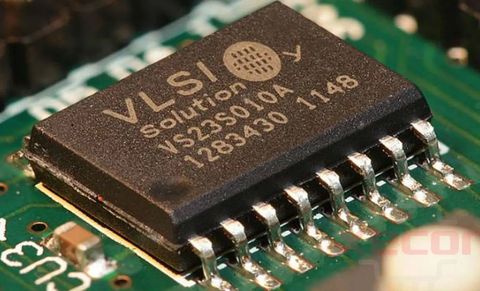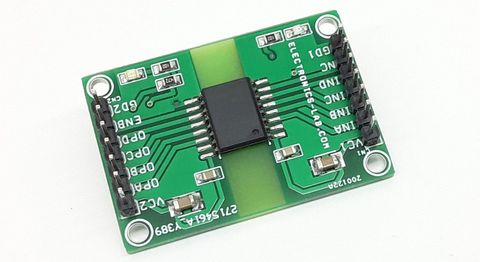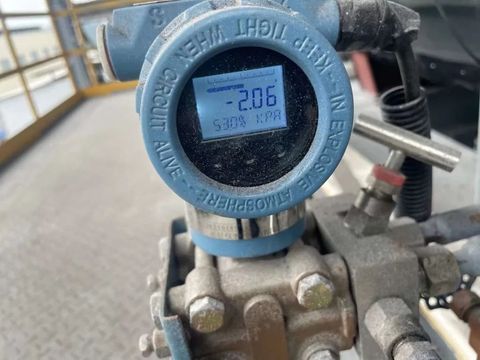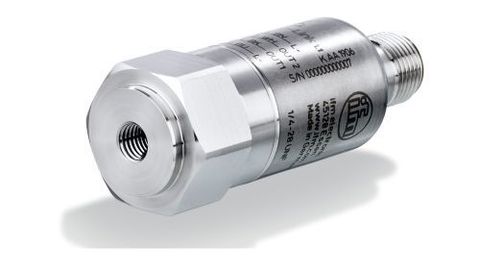Industrial Pressure Sensors Explained: A Complete Guide with Insights, Tips, and Key Information
Industrial pressure sensors are essential components used across manufacturing, energy, water systems, chemical plants, aerospace, and many automated environments. They measure force applied by gases or liquids and convert it into an electrical signal that can be interpreted by monitoring systems. These devices exist because modern industries depend on accurate, real-time data to maintain system stability, ensure safe operations, and support precision-driven processes. As factories and infrastructure become more automated, the need for high-reliability sensing technologies continues to increase.
Many industries rely on pressure monitoring to detect abnormalities, prevent equipment failures, and maintain stable performance. Industrial pressure sensors help operators understand what is happening inside pipelines, hydraulic systems, pressurized tanks, and mechanical processes. Their role has expanded with advanced systems such as predictive maintenance, process automation, and remote monitoring platforms.
Context: What Industrial Pressure Sensors Are and Why They Exist
Industrial pressure sensors are instruments that convert physical pressure into readable electronic data. They are built using technologies such as piezoelectric elements, strain gauges, capacitive structures, or micro-electromechanical systems (MEMS). Each technology offers different advantages for accuracy, durability, temperature stability, and environmental resistance.
These sensors exist to solve a core industrial challenge: systems that use or transfer fluids require precise measurement to stay efficient and safe. Pressure changes can indicate early signs of system issues such as leaks, blockages, pump wear, or unstable flow conditions. With growing industrial automation, pressure sensors have become foundational components for safety systems, process monitoring, and advanced industrial analytics.
High-value keywords naturally connected to the topic include industrial automation, process instrumentation, hydraulic pressure monitoring, fluid control systems, smart manufacturing, and precision measurement technologies. These terms help readers explore the topic without adding any sales-related language.
Importance: Why Pressure Sensors Matter Today
Industrial pressure sensors play a critical role in maintaining stability in essential sectors such as energy distribution, chemical processing, water treatment, and food manufacturing. As industries modernize, they require real-time monitoring to avoid unexpected shutdowns, prevent equipment strain, and maintain consistent flow operations.
Their importance can be understood through the key problems they help address:
-
Operational reliability
Pressure variations can damage equipment. Sensors provide early warnings that reduce unexpected failures. -
Environmental safety
Abnormal pressure can indicate leakage in pipelines or storage systems. Monitoring helps prevent contamination or hazardous releases. -
Process efficiency
Stable pressure ensures efficient performance of pumps, compressors, boilers, and hydraulic machines. -
Data-driven optimization
Modern plants use data from sensors to improve predictive maintenance and streamline energy usage. -
Compliance with industry standards
Many sectors require pressure monitoring to meet environmental, safety, or technical regulations.
Industries benefiting from these sensors include oil and gas, pharmaceuticals, water supply networks, renewable power plants, heating systems, transportation equipment, and industrial process control facilities.
Recent Updates: Trends and Developments in 2024–2025
Recent years witnessed notable progress in sensor technology, particularly in digital integration and environmental durability:
-
Expansion of IoT-enabled pressure sensors (2024)
More manufacturers introduced sensors compatible with wireless networks, edge-computing systems, and cloud dashboards. These upgrades allow real-time data access even in remote locations. -
Growth of MEMS-based pressure sensors (2024–2025)
Micro-scale sensors became widely used due to their compact size, long-term stability, and lower energy requirements. -
Enhanced temperature-resistant sensors (2024)
New materials have made sensors suitable for high-temperature industrial furnaces, engines, and chemical reactors. -
Environmental durability improvements (2025)
Upgrades in stainless steel housings, ceramic diaphragms, and corrosion-resistant coatings have increased use in seawater systems, wastewater plants, and harsh chemical environments. -
Cyber-secure sensor communication (2024–2025)
With rising digital connectivity, industrial networks adopted secure communication protocols to reduce cyber-related risks.
These updates show that modern pressure sensors are becoming smarter, more durable, and easier to integrate with digital industrial ecosystems.
Policies, Standards, and Regulations Affecting Pressure Sensors
Industrial pressure sensors are influenced by several regional and international rules that ensure accuracy, environmental safety, and compliance. Although regulations vary by country, common frameworks include:
Safety and Mechanical Standards
-
ISO 9001 – Quality management systems influencing manufacturing and calibration requirements.
-
ISO 6025 & ISO 15540 – Standards affecting the design and resilience of industrial pressure equipment.
-
IEC 61010 – Safety requirements for electrical equipment used in measurement and monitoring.
Environmental and Industry-Specific Rules
-
EU Pressure Equipment Directive (PED)
Governs design, testing, and labeling of pressure-related components used in Europe. -
ATEX Directives (EU)
Affect sensors used in explosive atmospheres like oil refineries and chemical storage areas. -
EPA Monitoring Requirements (U.S.)
Influence pressure devices used in environmental and emissions control systems. -
Indian Boiler Regulations (IBR)
Guide pressure monitoring across boiler and steam-based industries in India. -
ISO 14001 Environmental Management
Impacts systems handling hazardous fluids, requiring accurate monitoring for safety.
These frameworks ensure sensors operate reliably, accurately, and safely in regulated industries.
Tools, Resources, and Helpful References
A variety of resources support engineers, technicians, and students working with industrial pressure sensors. These include software tools, calculators, technical repositories, and engineering knowledge platforms.
Useful Tools and Calculators
-
Pressure Unit Conversion Tools
Converts psi, bar, Pa, MPa, and kg/cm² values. -
Fluid Flow Calculators
Estimates pressure drop, flow velocity, and pipeline characteristics. -
Digital Gauge Simulation Tools
Helps visualize pressure readings for training and testing.
Helpful Technical Resources
-
Engineering Standards Repositories
Provide ISO, IEC, and industry guidelines for sensor installation and performance requirements. -
Instrumentation Knowledge Portals
Offer tutorials on pressure transmitters, differential sensors, and calibration basics. -
Industrial Monitoring Platforms
Explain trends in sensor integration with IoT, automation, and cloud dashboards.
Example Table: Common Types of Industrial Pressure Sensors
| Sensor Type | Typical Use | Key Characteristics |
|---|---|---|
| Strain Gauge | Hydraulic systems, manufacturing lines | High accuracy, durable |
| Piezoelectric | Dynamic pressure changes, vibration systems | Fast response time |
| Capacitive | Low-pressure measurement | Sensitive to small variations |
| MEMS | Compact devices, automation systems | Lightweight, energy-efficient |
| Differential | Filters, pipelines, ventilation | Measures pressure difference |
FAQs
What are the main types of industrial pressure sensors?
Common types include strain gauge, piezoelectric, capacitive, MEMS, and differential pressure sensors. Each type is built for specific ranges, environments, and measurement requirements.
Where are pressure sensors used most often?
They are widely used in industries such as energy systems, water supply networks, manufacturing plants, HVAC equipment, chemical processing, and automated machinery that depends on stable pressure control.
How is pressure data typically monitored?
Data from pressure sensors is sent to control panels, PLCs, SCADA systems, or IoT dashboards. This enables operators to review readings, detect anomalies, and make precise adjustments.
What affects the accuracy of pressure sensors?
Factors include temperature fluctuations, mechanical vibration, fluid characteristics, sensor age, and installation conditions. Regular calibration improves reliability.
Do digital sensors offer advantages over analog types?
Digital sensors often provide higher resolution, remote monitoring capability, stable long-term output, and better compatibility with automation platforms. However, analog sensors remain popular in environments requiring simplicity and direct wiring.
Conclusion
Industrial pressure sensors play a vital role in ensuring the reliability, safety, and efficiency of modern industrial systems. They provide essential data for hydraulic operations, fluid flow control, energy management, and automated processes. With ongoing advancements such as IoT connectivity, enhanced materials, and MEMS technology, pressure sensors continue to evolve while supporting smarter and more stable industrial environments.







